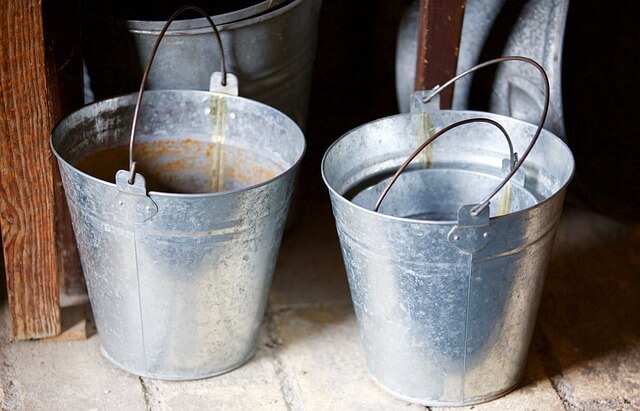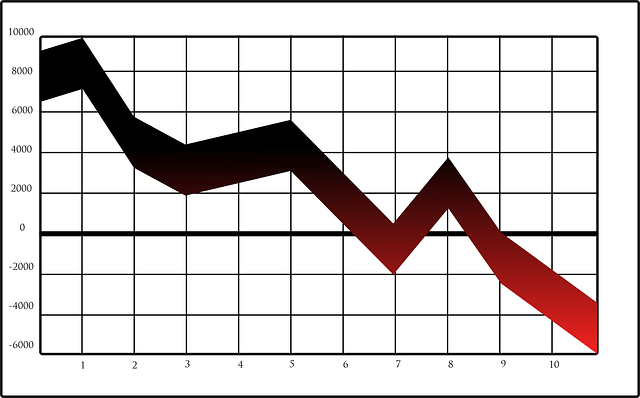Imagine that today’s the first day of your retirement. You’ve invested all of your retirement assets into shares. You go online in order to sell enough shares to fund the next month. You’re horrified to find that your share portfolio has dropped in value by 10% after a market crash. The press is speculating about even worse to come. One of the main justifications for the so-called bucket strategy for investment drawdown is to guard against this type of scenario.
What Is The Bucket Strategy?
The theory behind the bucket strategy of investment was conceived by Nobel Prize winning economist James Tobin. Later, financial planning specialist Harold Evensky pioneered it in practice.
In the bucket strategy, you divide up your investment portfolio into two or more parts, known as buckets. Each bucket is different in terms of the riskiness of the investments. The simplest bucket approach consists of just two buckets:
- A cash bucket holding enough cash to cover your outgoings for some considerable time. The exact time depends on your risk tolerance. It could range from 6 months to perhaps as much as 3 years.
- An equity bucket, invested for growth for the longer term. Any income generated is paid into the cash bucket.
The idea is that you make withdrawals from the cash bucket to top up any other pension income you may be receiving so that you can cover your outgoings. You would typically make a monthly transfer into your current account, to simulate additional income.
Under normal circumstances, you periodically replenish the cash bucket by selling shares from the equity bucket. However, if there’s a market correction, you can defer selling equities until markets have recovered.
Adding More Buckets

You can further refine the bucket strategy by adding more buckets. For example, a three-bucket strategy might use an intermediate bucket (No 2) between a cash bucket (No 1) and an equity-growth bucket (No 3). Bucket 2 would consist of relatively low-risk investments that generate income. These could include bonds and high-yielding equities. The total value of assets in bucket 2 should be enough to support several years of outgoings. In this way, buckets 1 and 2 together provide an even bigger buffer in case of a market correction.
You’d pay the income from bucket 2 into bucket 1, to help keep it topped up. Periodically, you’d need to sell some assets in bucket 2 to further top up bucket 1. In turn, you’d keep bucket 2 topped up by selling assets in bucket 3; this can be deferred in case of a market correction.
Reasons For Using A Bucket Strategy
The biggest risk in any drawdown strategy is what’s known as either “sequence risk” or “sequence of return risk”. This is the risk that a severe market correction early on in retirement will so deplete your portfolio that you eventually run out of money.
You might hope that with the right bucket strategy, you could eliminate sequence risk. It’s important to realise that you can’t. That’s because a bucket strategy is really just an organised way of diversifying and rebalancing a portfolio. Even without explicit buckets, a well-balanced portfolio should contain similar types of investment overall, and be rebalanced periodically. However, the advantage of a bucket strategy is that it provides a clearer focus for balancing and rebalancing.
Should there be a severe and protracted bear market, the equity-growth bucket would become depleted, and could eventually run out. This would have knock-on effects on the other buckets, which could also eventually run out.
However, the other main benefit of a bucket approach is peace of mind. The grouping of assets into buckets puts one or more financial buffers between the retiree and the growth part of the portfolio.
So the two key benefits of a bucket strategy are:
- Discipline.
- Peace of mind.
Dealing With A Market Correction

When embarking on a drawdown strategy in retirement, you need to set your level of withdrawal according to:
- Necessary spending.
- Discretionary spending.
- The risk of running out of money.
- The importance of leaving a legacy.
In an ideal world, you could maintain the same level of withdrawal indefinitely, adjusting each year by inflation. This is what you’d expect from a defined benefit pension or from an index-linked annuity (except that there’d be little or no chance of leaving a legacy). But with drawdown, there’s always a certain risk attached to any inflation-adjusted withdrawal level. Even if you are using a bucket strategy.
At some point, if there’s a market correction or bear market, there are two possible approaches you could take:
- You could continue withdrawing at the same level, letting the buckets take the strain. You might take the view that markets are most likely to rebound. For minor corrections, this might be the right approach.
- You could trim your discretionary spending. This might well be prudent in case of a major correction or a prolonged bear market.
Using A Bucket Approach With EvolveMyRetirement
EvolveMyRetirement® is the Intelligent Financial Calculator. It can suggest a starting level of investment risk that makes your lifetime risk compatible with your risk tolerance. It can also suggest to what degree this risk should be gradually reduced over time. The investment risk suggested by EvolveMyRetirement® is the aggregated risk over all your investments, including all your buckets if you decide to use them.

I do not agree, read https://www.bethsnotesplus.com/2013/07/theres-hole-in-bucket.html
Virgina